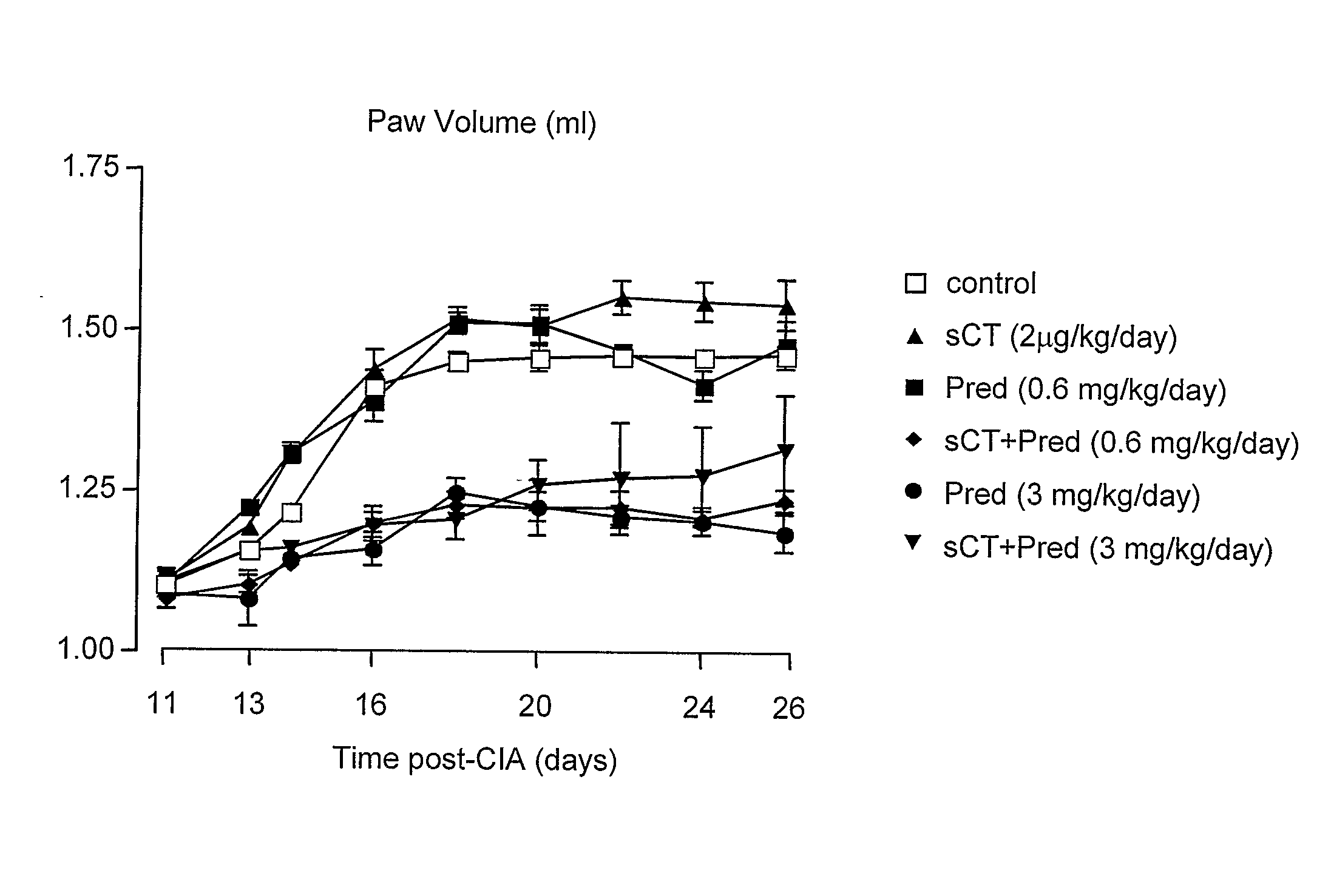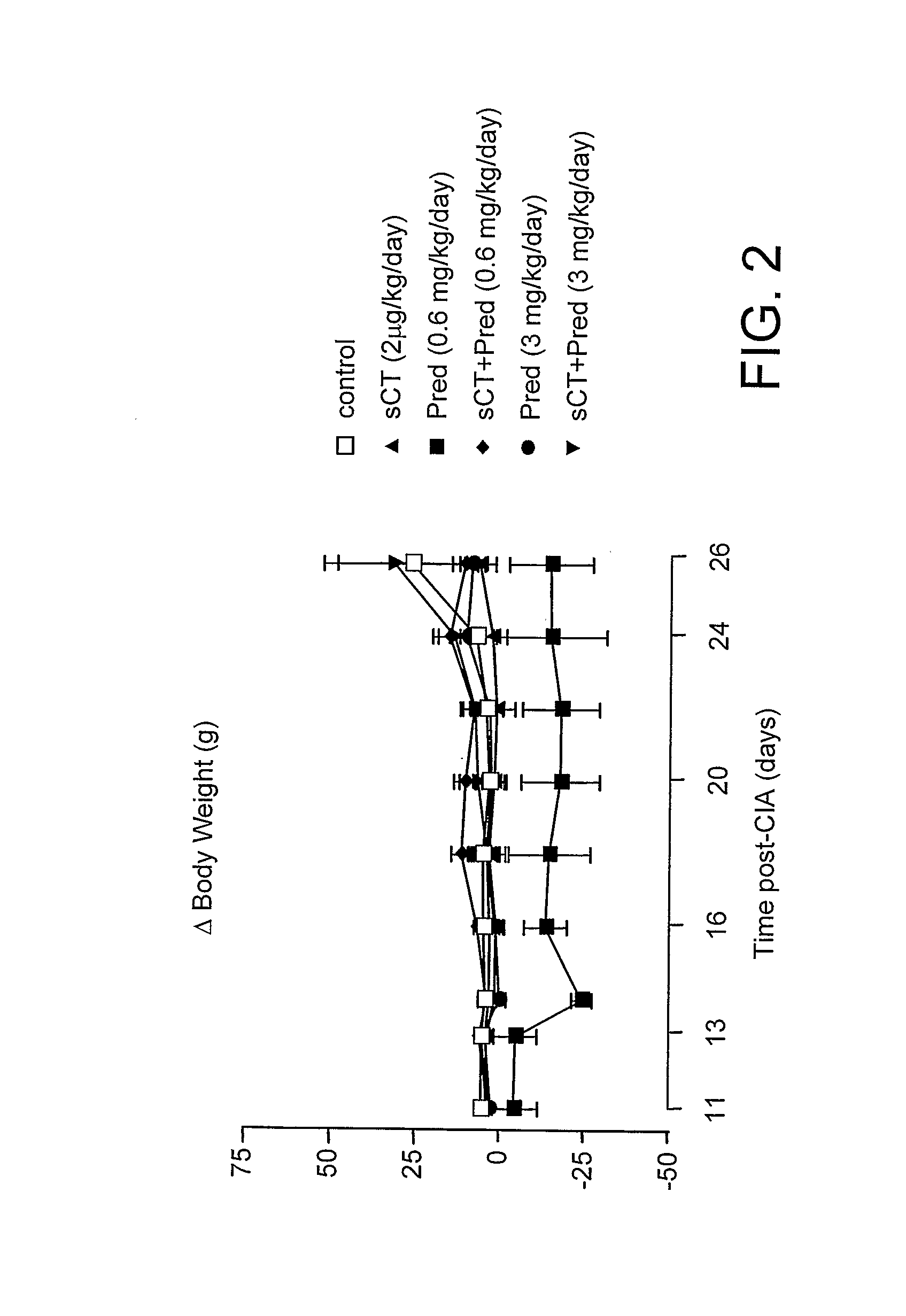Use of Calcitonin as Combined Treatment Therapy for the Management of Inflammatory Disease Conditions
a technology of inflammatory disease and combined treatment, which is applied in the direction of immunological disorders, antibody medical ingredients, peptide sources, etc., can solve the problems of high cost of new drugs, and often linked therapeutic management of long-term pathologies with g
- Summary
- Abstract
- Description
- Claims
- Application Information
AI Technical Summary
Benefits of technology
Problems solved by technology
Method used
Image
Examples
experiment 1
[0073] Study of Effect of Treatment Protocol on Experimentally-Induced Arthritis
[0074]Collagen II-induced arthritis (CIA). Female Lewis rats (150±20 g body weight; Harlan UK Ltd Bicester, Oxfordshire, England) were fed on a standard chow pellet diet and had free access to water and maintained on a 12 h light / dark cycles. Animal work was carried out under licence from the Home Office in accordance with the Animals (Scientific Procedures) Act, 1986. Bovine nasal collagen II (4 mg / ml; Sigma-Aldrich Ltd, Poole, UK) was dissolved in acetic acid (0.01M) then emulsified with the same volume of ice-cold Freund's incomplete adjuvant (Sigma-Aldrich). On day 0, rats were anaesthetised with halothane, the base of the tail shaved and injected intradermally with collagen II / adjuvant suspension (400 μg collagen II per rat). The first signs of arthritis were evident between days 11 and 13, with maximal inflammation observed at day 18-21.
[0075]CIA-induced inflammation was confined to ankle joints an...
PUM
 Login to View More
Login to View More Abstract
Description
Claims
Application Information
 Login to View More
Login to View More - R&D
- Intellectual Property
- Life Sciences
- Materials
- Tech Scout
- Unparalleled Data Quality
- Higher Quality Content
- 60% Fewer Hallucinations
Browse by: Latest US Patents, China's latest patents, Technical Efficacy Thesaurus, Application Domain, Technology Topic, Popular Technical Reports.
© 2025 PatSnap. All rights reserved.Legal|Privacy policy|Modern Slavery Act Transparency Statement|Sitemap|About US| Contact US: help@patsnap.com



